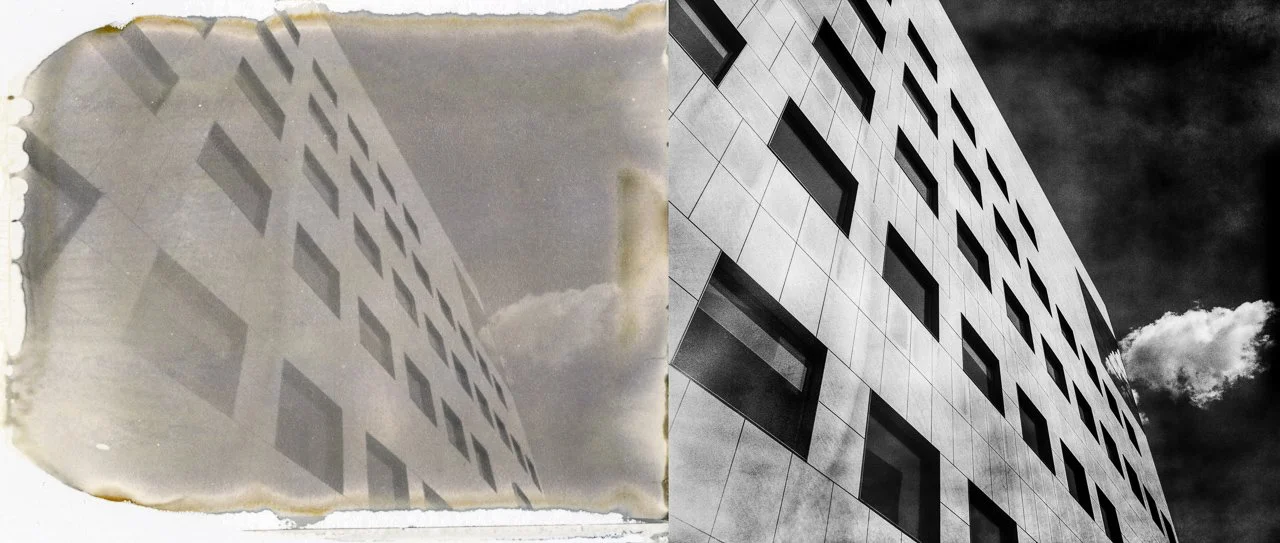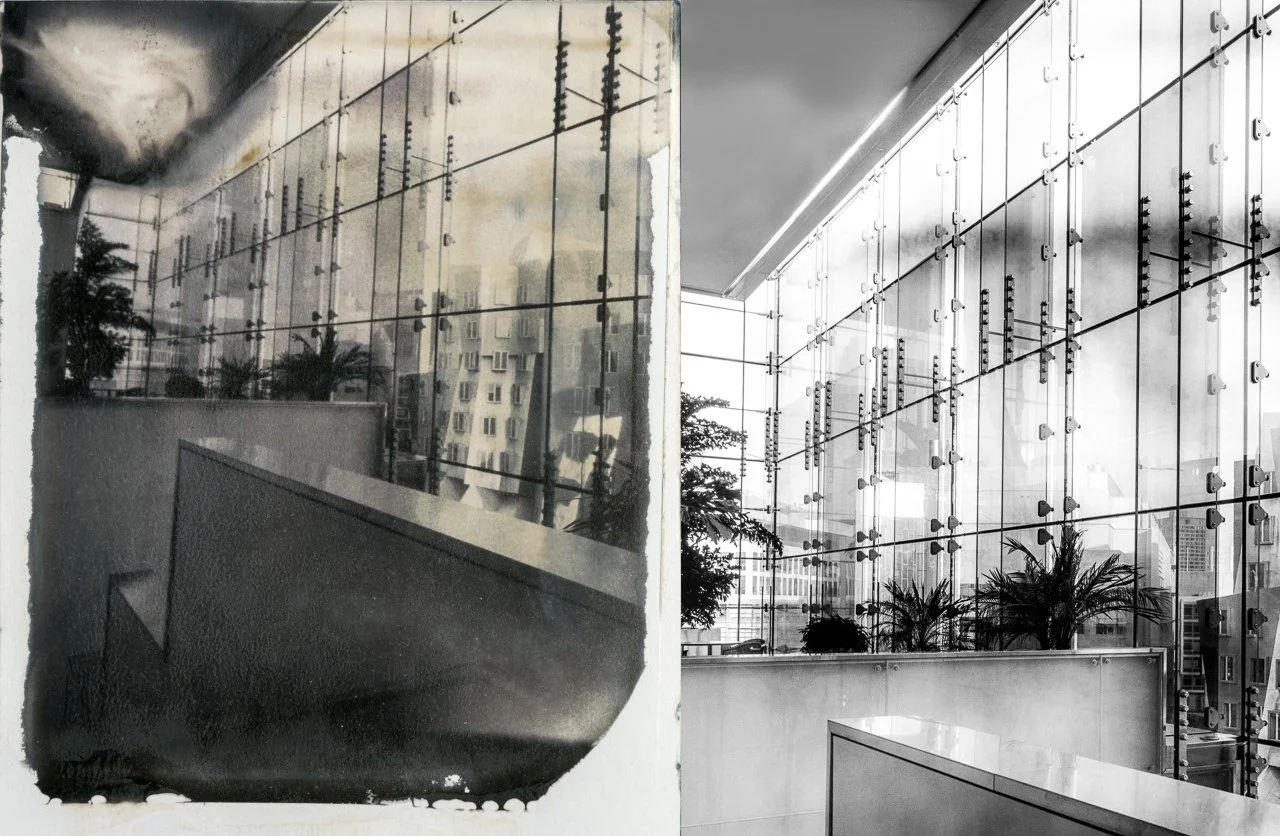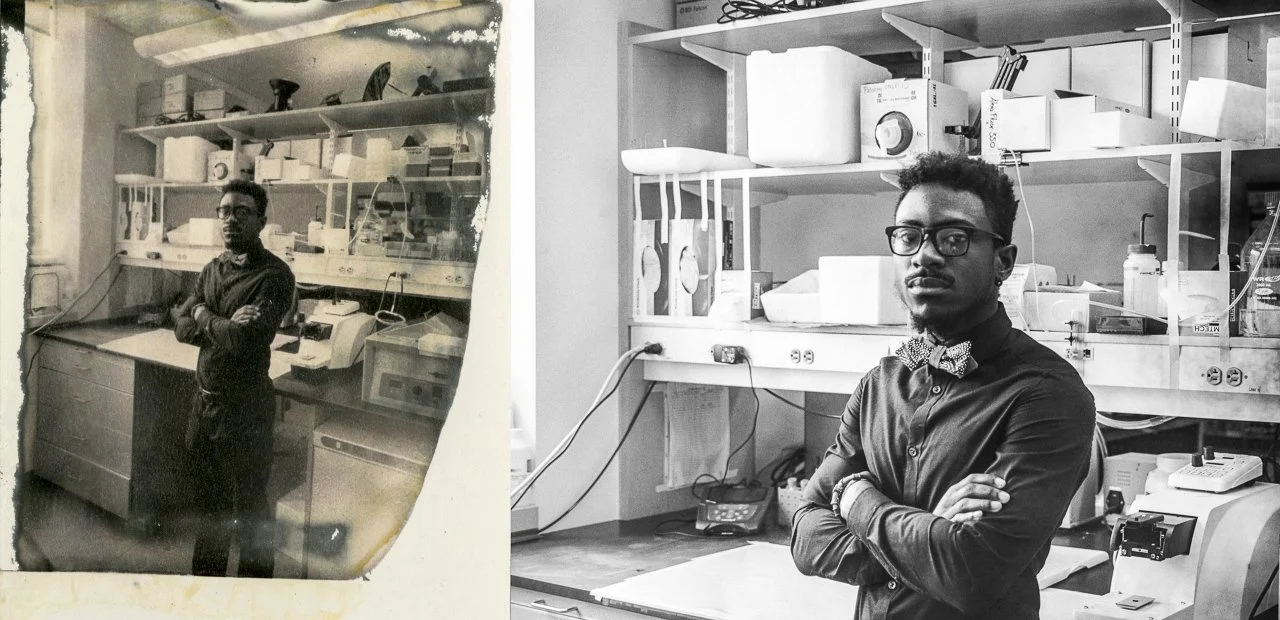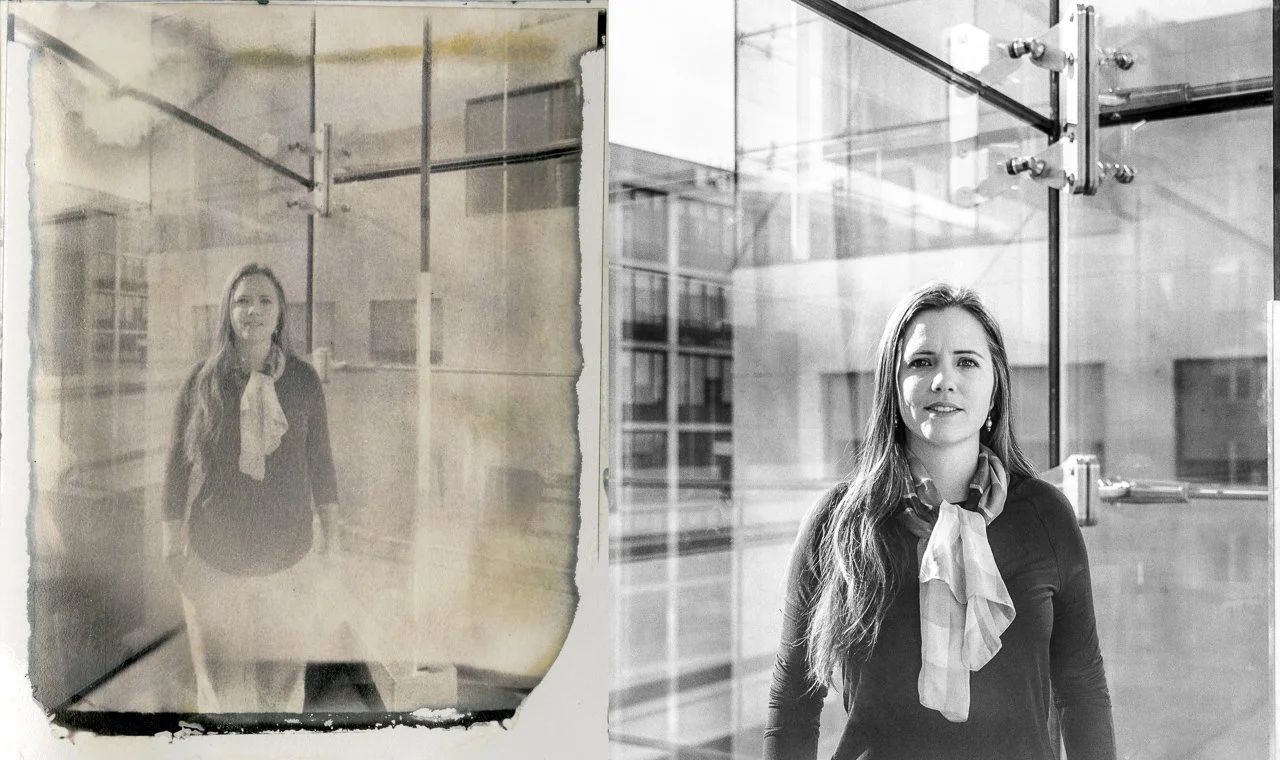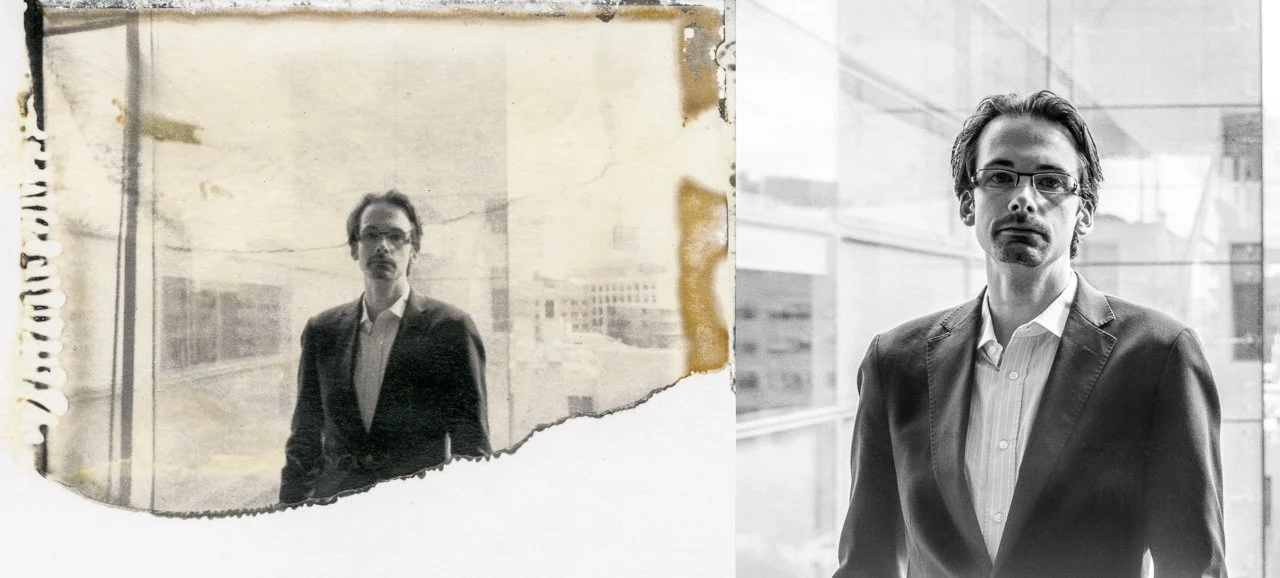Representation of Hidden Communication
Neuroscience is a pop-culture fixation, but the public knows little about how science is done, who does it, or why it’s essential. One consequence of opaque research is the inability to see those who make new findings, their stories, and why they seek to reveal the complexity of nature.
These images were captured with a manual large format camera, designed and fabricated from a precision injection mold, and created using experimental pull-apart instant film. This series is set up to mimic that of scientific data acquisition, where tools are engineered for the demands of the project.
The opaqueness of the positive (left) represents the raw data collected by researchers on their quest to understand the brain. The inverted negative (right) represents how scientists reveal the mind by filtering data, beautifying imagery, and removing captured noise.
-
![A black and white diptych image of a building]()
Building 46 at MIT
The front façade of the Department of Brain and Cognitive Sciences at the Massachusetts Institute of Technology. This building houses the Course 9 major, that is, neuroscience. The late Charles Correa was the lead designer for the building.
-
![An atrium interior]()
Atrium
Neuroscience researchers gather in the atrium after lectures from visiting scientists. Here, the venue is clear of people as neuroscientists conduct their research.
-
![]()
Seminar Room
An empty seminar room where visiting professors come to give the latest updates on their research. It’s been said that presenting at MIT is akin to speaking in a lion’s den.
-
![]()
Reading Room and Garden
A reading room flooded with natural light for chance encounters to exchange ideas and for scientists to have a drink after visiting scholars present their work.
-
![]()
AZA Allsop, MD, PhD
AZA Allsop received his PhD at MIT and medical training at Harvard Medical School. Allsop was born in Brooklyn, NY, and grew up in Trinidad and Tobago before moving to Cambridge to study the brain circuitry of social cognition. Allsop’s findings suggest that there are encoded circuits in the brain to learn by observing others, which may play a fundamental role in understanding the feelings of others. In addition to pursuing a medical degree and PhD, Allsop is an accomplished jazz musician.
-
![]()
Caitlin Vander Weele, PhD
Caitlin Vander Weele comes from a small German tourist town, Frankenmuth, Michigan where it is Christmas year-round. Her PhD focused on the projection-defined circuits in the prefrontal cortex that encode information about positive and negative events. Her research has led to finding brain regions that play a crucial role in generating feelings of isolation. Vander Weele is now the Founder & CEO of Stellate Communications.
-
![]()
Steve Ramirez, PhD
Steve Ramirez was born and raised in Boston, but his immediate family comes from El Salvador. After receiving his neuroscience degree at Boston University, Ramirez attended the Brain and Cognitive Sciences PhD program at MIT. Ramirez may best be known for his work on inserting false memories into mice with his collaborator Xu Liu. He now runs his own lab at Boston University.
-
![]()
Nancy Padilla, PhD
Nancy Padilla was born and raised in Puerto Rico and attended music school where she specialized in piano and cello. She became interested in how the brain allows one to experience music emotionally and memory recall. Ultimately, Padilla obtained her PhD in neuroscience from Columbia University and conducted her postdoctoral training at MIT, where she studied the role of estrogen on the brain circuitry of anxiety behaviors. She is now an Assistant Professor at the University of Florida, College of Medicine.
-
![]()
Rodrigo Garcia, PhD
Rodrigo Garcia was born in Boaco, Nicaragua, moving to the United States due to the civil and political unrest that resulted from the Iran-contra affair. As a postdoctoral associate at MIT, he studied astrocytes—one of a type of non-neuronal cells called glia that makes up about half of the human brain—to see how they contribute to information processing in the visual cortex.
-
![]()
Rachel Cuozzo
Rachel Cuozzo is an MIT alumna. Born in New York, Cuozzo grew up in South Florida. While at MIT, she studied the brain stem's parabrachial nucleus (PBN) and its role in maintaining consciousness. She became interested in neuroscience in high school after being enamored by the anatomy and beauty of the human body.
-
![]()
Anna Beyeler, PhD
Anna Beyeler is from the town of Tourliac, France. After studying the spinal cord at the University of Bordeaux, where she received her PhD, she switched her focus to studying the neural circuitry of the hippocampus. Anna is now researching the amygdala -- a brain region that’s important for infusing positive or negative emotions into experiences -- known as valence. Her work can help in understanding mental illnesses such as depression and anxiety. She currently leads a research team at Bordeaux-Neurocampus.
-
![]()
Shruti Muralidhar, PhD
Shruti Muralidhar is from India. She finished her PhD at the Ecole Polytechnique Federale de Lausanne in Switzerland. From Switzerland, she began postdoctoral research at the University of Utah. Muralidhar continued her postdoctoral work in the Nobel prize-winning lab of Susumu Tonegawa at MIT, studying learning and memory. Now, Muralidhar is a research scientist at Deep Genomics.
-
![]()
Tomás Ryan, PhD
Tomás Ryan is from a small market town called Dungarvan in Country Waterford, Ireland. He completed his undergraduate degree at Trinity College Dublin. He moved to the University of Cambridge in the UK for his PhD before coming to MIT to study memory and amnesia. Ryan’s findings show that amnesia is not about losing memories but rather the inability to access seemingly lost memories. He is now a Assistant Professor at Trinity College Dublin.
-
![]()
Stereotaxic Setup in Faraday Cage
The microscope shown here is used to perform surgeries that allow neuroscientists to use laser light to turn on and off a subset of brain networks. The technique is called optogenetics
-
![]()
Optogenetic Physiology Rig
This is a sophisticated physiology rig designed to turn on or off very specific subcircuits in the brain—neuroscientists can identify the neural circuitry that underlies how the brain bridges two independent events in time, that is, associative learning
-
![]()
2-Photon Microscopy
This microscope is used to study the function of astrocytes, a type of non-neuronal cell that helps make up half all cells in the human brain. This machine investigates how astrocytes contribute to information processing in the visual cortex.
-
![]()
Lab Bench
A classic lab bench, messy from experimentation, filled to the brim with solutions, salts, and sometimes neurotoxins.

